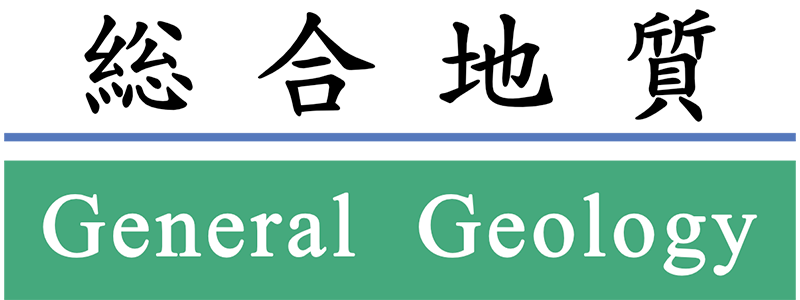

- Article -
Sedimentary environment and stratigraphy of the late Pleistocene to Holocene of boring core drilled in the Higashi Ward of Sapporo, Hokkaido, Japan [PDF link]
Tsumoru Sagayama, Akira Sato, Yukio Izima and Satoshi Okamura
General Geology, Vol. 2, Page 1–11.
Abstract
In order to elucidate stratigraphy and sedimentary environments of the Pleistocene and Holocene in the Ishikari Lowland, we carried out radiometric carbon age measurements, and analyses of volcanic ash and diatom for a boring core (SL-2) of 43.50 meter long obtained from the Higashi Ward, Sapporo, central Hokkaido. From volcanic ash analysis, we have identified the following three late Pleistocene ash layers useful for wide correlations: the Shikotsu Pumice Flow deposits (Spfl) of ca 4.1 ka, the Toya volcanic ash (Toya) of ca 11.3 ka and newly identified Sapporo Higashi-ku volcanic ash (SHa) in MIS5e. Our and previous studies on diatom fossils indicate the Paleo-Ishikari Lake, a brackish water lake, had spread over a wide area from the Momijiyama dune to the Minami-naganuma at the maximum stage of the transgression, 7,000 cal BP. The stratigraphic and environmental data presented in this study provide insights into the Quaternary evolution of the Ishikari Lowland.
- Idea -
A conversion from sediment-starved to sediment-filled trench: An example from the Cretaceous Shimanto Belt [PDF link]
Kazuo Kiminami
General Geology, Vol. 2, Page 12–19.
Abstract
The late Early Cretaceous Shimanto Belt is characterized by a poorly developed accretionary complex, in contrast to the Cenomanian–early Coniacian accretionary complex that is made up of thick sequences of coarse-grained clastic sediments, suggesting the onset of voluminous influx of clastic sediments to the Shimanto Trench from the Cenomanian. The amount of sediments in a trench may be controlled by the presence of back-arc, intra-arc and forearc basins, because the basins can store kilometers of sediments in thickness; consequently, most of sediments do not reach the trench. Sedimentation in the Gyeongsang–Kanmon Basin which stored large volumes of clastic sediments commenced at ca. 127 Ma and ended at ca. 98 Ma or during the early Cenomanian. Development of the Monobegawa forearc basin in the Kurosegawa Belt lasted from the Hauterivian–early Barremian (ca. 130 Ma) to ca. 100 Ma. The periods of sedimentation in the Gyeongsang–Kanmon and Monobegawa basins coincide roughly with the period of poorly developed accretionary complex during the late Early Cretaceous. In addition, the demise of Gyeongsang–Kanmon and Monobegawa basins was almost synchronous with the initiation of rapid growth of the Shimanto accretionary complex during the early Cenomanian. In this context, I here propose that a conversion from sediment-starved to sediment-filled trench occurred at ca. 98 Ma or during the early Cenomanian in the Shimanto Trench in response to the infilling of the Gyeongsang–Kanmon and Monobegawa basins.
- Report -
Late Cenozoic strata of the northern area of Makarov (Sirutori) in Sakhalin Island, the Russian Federation [PDF link]
Takao Oka
General Geology, Vol. 2, Page 20–58.
(no English Abstract)
- Review Paper -
Kazuo Kiminami
General Geology, Vol. 2, Page 59–60. [PDF link]
Schellart, W.P. and Moresi, L., 2013. A new driving mechanism for backarc extension and backarc shortening through slab sinking induced toroidal and poloidal mantle flow: Results from dynamic subduction models with an overriding plate. Jour. Geophys. Res.: Solid Earth, 118, 3221–3248.
Zhang, S., Zhu, G., Liu, C., Li, Y., Su, N., Xiao, S. and Gu, C., 2018. Strike-slip motion within the Yalu River Fault Zone, NE Asia: The development of a shear continental margin. Tectonics, 37, doi.org/10.1029/2018TC004968.
Full-issue Download Page for the "General Geology" is here .
・Volume 8, Number 1
・Volume 7, Number 1
・Volume 6, Number 1
・Volume 5, Number 1
・Volume 4, Number 1
・Volume 3, Number 1
・Volume 2, Number 1
・Volume 1, Number 1